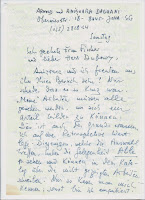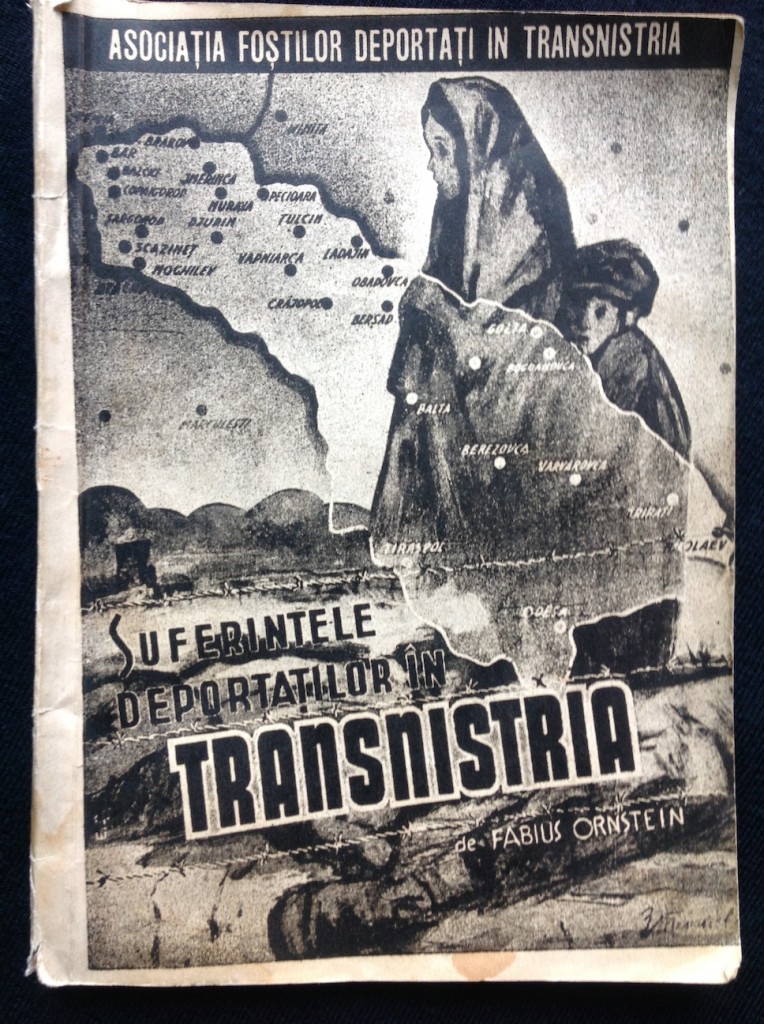Click to enlarge. This is actually the result of clicking on the link in the ‘The Jew Statue’ article.





Well, the “Nazi” was Walter Gieseke, Oberstleutnant of the Gendarmerie and SS, the “Painter” was Arnold Daghani and the DG IV (Durchgangsstraße IV) was the “SS Road”, the road building project across the Ukraine which resulted in the murder of substantial numbers of Jewish forced labourers, among those many from Bukovina.
At my previous posting “The Stone Quarry on the Bug River at 8 Miles from N 48°40′ E 29°15′” you’ll find additional reports on the fate of the Jewish forced labourers including excerpts from Andrej Angrick’s article “Forced Labor along the ‘Straße der SS'” and Gerhard (Bobby) Schreiber’s memoirs “A Tale of Survival”. After getting numerous answers to our initial question, the final question concerns the moral condemnation and criminal conviction of the war criminals, but read by yourself G. H. Bennett’s conclusion:
“Gieseke was never brought to trial and Daghani would eventually conclude that the West German investigations into the crimes committed along DGIV were ‘merely a farce, a meaningless gesture’. […] The investigation of Walter Gieseke highlights the problems in the 1950s and 1960s of securing justice for crimes committed during the war. The processes of investigating and prosecuting of German war criminals in the context of West German justice in the 1950s and 1960s were not likely to result in a conviction. Gieseke’s defensive strategies maximized the problems facing investigators which resulted from the set of legal, political, social and investigative contexts that made a trial difficult and, in the eyes of many West Germans, unwanted and unwarranted. […] In the case of Walter Gieseke can be glimpsed many of thecomplexiti es that protected the guilty men and women of post-war Germany. Moreover, study of this case hopefully demonstrates the need to discount concerns about ‘practitioners’ trespassing onto the territory of historians. In studying post-war German justice, and indeed most aspects of legal history, there is ample scope for practitioners and historians to pool their skills and approaches to the mutual benefit of truly interdisciplinary scholarship.There is much to be learned from each other and little to be feared.
Additional Links:
“SS film links officer with war crimes” by BBC
“Lost film unearthed in Devon church…” by Daily Mail
“Arnold Daghani. Who is he?” by Miha Ahronovitz
“The Art of Arnold Daghani” by The Art of Polemics

Click on the front cover above to download the booklet!
I succeeded to acquire a very rare book: The Suffering of the Deportees in Transnistria by Fabius Ornstein, edited by the Association of the Former Deportees to Transnistria immediately after WW2 still in 1945. On Fabius Ornstein’s life-saving activity in Transnistria we learn from the Jewish Telegraphic Agency report dated July 26, 1943 as follows:
“Thousands of Jews in Transnistria Have Not Seen Bread for Months, Hundreds Starving
Thousands of Jewish deportees confined in the various ghettos which the Rumanian occupation authorities have established in Transnistria, the Rumanian-administered section of the Russian Ukraine, have not seen any bread for months and the vast majority of them are threatened with starvation unless some assistance is forthcoming soon, according to private advices received here today. In the township of Copaigorod about 2,220 Jews are confined at present, the report discloses. Under the leadership of one of the deportees, Fabius Ornstein, the Jewish community has organized a free kitchen which has so far managed to distribute about 500 meals twice daily. These ‘meals,’ however, almost always consist of potatoes and nothing else. […]“